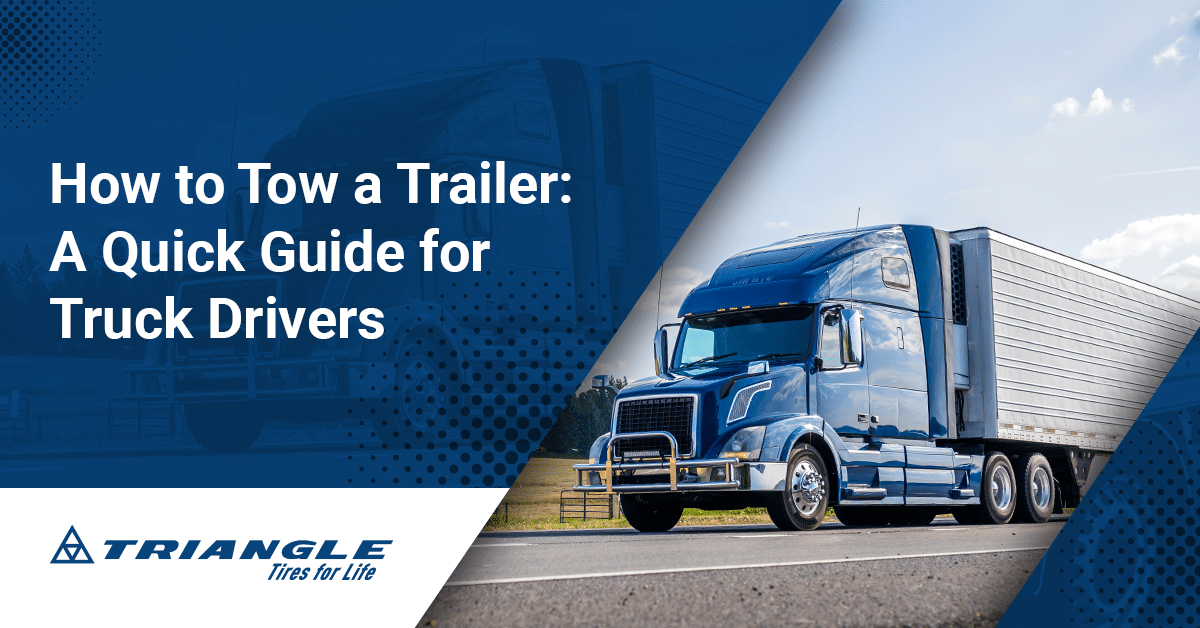
When it comes to the open road, driving big trucks is a world apart from cruising in a passenger car. That’s why becoming a trailer truck driver in the Philippines requires more than a basic license. It demands specialized clearances with stringent practical testing requirements before towing a trailer legally on Philippine roads.
As you read on, you’ll learn how to tow a trailer and some tips on driving one to help you expertly maneuver your vehicle on the open road.
How to Hitch a Trailer
When driving a trailer truck, you must know how to properly hitch a trailer to a truck and drive safely ⎯ regardless of the type of delivery truck you’re maneuvering. Here are the steps to help you.
Step 1: Get the truck and trailer into position
The first step to learning how to hitch a trailer is to align your truck and trailer perfectly. This basic consideration is the foundation for successful hitching. The proper truck and trailer alignment is likewise essential when working with large equipment in tight spaces.
Align the truck and trailer in a straight line to avoid the hassle of realigning later on and make the process more efficient.
Step 2: Put the truck into reverse until the coupler is directly above the hitch
Engage your truck’s reverse gear and slowly back up. Position the coupler—the device connecting the trailer to the truck — directly above the hitch ball of your tow vehicle. While reversing, exercise precision since an inch off can make a significant difference. Patience and steady control ensure that you achieve a perfect alignment and are ready for the next move.
Step 3: Secure the trailer to the coupler
The next step you should practice to master how to tow a trailer is lowering the coupler onto the hitch ball of your truck. Once the coupler is in place, lock it securely to guarantee your trailer and truck will move in tandem, reducing the risks of swaying and preventing detachment during transit.
Step 4: Remove the trailer jack
If your trailer has a front jack that supports its weight, you should remove it. Raise the jack and stow it in its designated place. Failure to remove the trailer jack may cause it to fall and drag on the streets.
Step 5: Attach the trailer’s safety chains to the back of the truck
The safety chains on the back of the truck act as a vital safety measure if the trailer detaches while in transit. Specifically, they help prevent complete separation and provide an additional layer of security.
Step 6: Make sure the trailer lights are connected and working properly
Functional trailer lights are a legal requirement and an essential safety feature, as they communicate your intentions to other drivers on the road and reduce accidents.
How to Drive a Trailer Truck
After securely hitching the trailer vehicle to your truck, it is time to navigate the open road. Consider the following tips on how to drive a trailer truck for safe and timely journeys.
1. Accelerate slower than usual
Typically, hitting the accelerator in a passenger car triggers a swift response. However, the process is more gradual with a trailer in tow. This gradual acceleration minimizes the strain on your truck’s engine and allows the trailer to adapt to the momentum, reducing the risks of swaying and instability.
2. Do not brake abruptly
Sudden stops can pose challenges to a stable trailer truck. The added weight behind you needs extra time to slow down. So gently step instead of slamming the brakes—giving the trailer enough space to respond and prevent it from pushing against the truck.
3. Make sure there is enough stopping distance
Keep a larger gap between your truck and the vehicle in front of you to accommodate the extended stopping distance. Remember, the trailer’s weight adds to its momentum; thus, it demands more space to halt. This proactive measure ensures you won’t be caught off guard by unexpected breaks.
4. Take wider turns
Your trailer extends beyond the rear wheels of your truck. For instance, its elongated form can affect your turning radius. It’s best to turn from a wider angle than you would with a truck, allowing the trailer to follow your lead without causing abrupt movements that may hit curbs, poles, or other vehicles.
5. Stick to one lane
Frequent lane changes increase the risk of swaying and compromise your truck’s stability. Switching from lane to lane also increases the risk of catching a smaller car driving beside your tow vehicle and trailer. For everyone’s safety, stay in one lane as much as possible to secure your journey.
6. Be mindful of your blind spots
Because of their size, trucks inevitably have blind spots. But with a trailer in tow, those blind spots expand. It’s best to check your mirrors before making lane changes or turns and clearly show your intentions to alert other drivers about your trailer’s presence.
7. Remember the golden rule of articulation
A trailer’s movement can be counterintuitive. When you turn the steering wheel to the left, the trailer moves to the right and vice versa. This counteraction may feel odd initially, but understanding it will significantly improve your maneuvering skills.
Steer Your Trailer Truck with Confidence
Driving a trailer truck requires blending precision with intuition. From attaching the trailer to your truck and maneuvering your truck in the open road, each move must proceed with caution. By knowing the proper ways to handle a trailer truck, you can navigate with ease while ensuring safety and efficiency every mile of the way.
If you’re looking for quality tires, Triangle Tires can help. We have a wide array of tires —from passenger cars and light trucks to heavy equipment vehicles—available for delivery at an affordable price.
Browse our tire catalog, or contact us for tire recommendations.